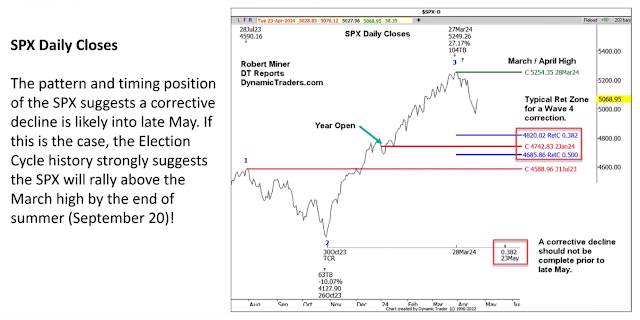The SoLunar Rhythm in May 2024.
[ oftentimes true : ]
In Bull Markets, New Moons are Bottoms, and Full Moons are Tops.
In Bear Markets, New Moons are Tops, and Full Moons are Bottoms.
ooo0ooo
2024 Feb 25 (Sun) = Low
2024 May 26 (Sun) = High
2024 Jun 11 (Tue) = Low
2024 May 26 (Sun) = High
2024 Jun 11 (Tue) = Low
ooo0ooo
Apr 26 (Fri)
May 15 (Wed)
May 26 (Sun)
Jun 16 (Sun)
May 15 (Wed)
May 26 (Sun)
Jun 16 (Sun)
2024 04 26 (Fri) = SUN @ 6 TAU = 36 degrees = negative = low
2024 05 01 (Wed) = SUN @ 12 TAU = 42 degrees = neutral
2024 05 08 (Wed) = SUN @ 18 TAU = 48 degrees = negative = low
2024 05 19 (Sun) = SUN @ 19 TAU = 59 degrees = neutral
2024 05 25 (Sat) = SUN @ 5 GEM = 65 degrees = negative = low
2024 06 06 (Thu) = SUN @ 16 GEM = 76 degrees = neutral
2024 05 01 (Wed) = SUN @ 12 TAU = 42 degrees = neutral
2024 05 08 (Wed) = SUN @ 18 TAU = 48 degrees = negative = low
2024 05 19 (Sun) = SUN @ 19 TAU = 59 degrees = neutral
2024 05 25 (Sat) = SUN @ 5 GEM = 65 degrees = negative = low
2024 06 06 (Thu) = SUN @ 16 GEM = 76 degrees = neutral























%20-%20ICT%20Syllabus%20for%20Beginners%20(YouTube).jpg)









